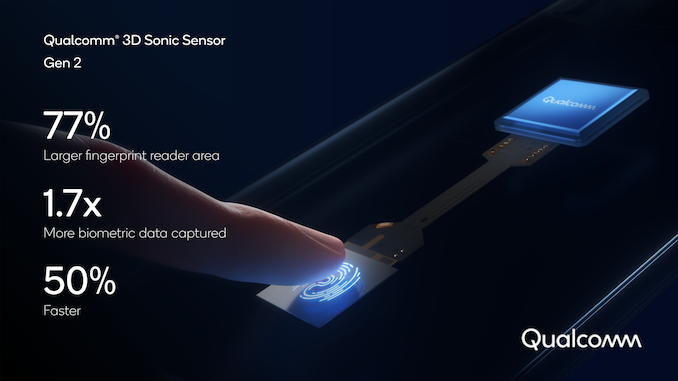Today Qualcomm announces the launch of its new 2na generation ultrasonic fingerprint sensor. In 2019, the company launched its first generation sensor, most notable for being used in Samsung’s Galaxy S10 and S20 series of devices, offering an alternative and very different technology compared to competing optical fingerprint sensor solutions.
Among the biggest criticisms of first generation devices were the size of activation, as well as the speed of sensor recognition, something Qualcomm is now addressing with the new 2na generation project.
The new sensor is 77% larger, now covering an area of 64 mm² in an 8×8 mm format, compared to the 36 mm² 4×9 mm design of the first generation design. The company claims that this allows 1.7x more biometric data, and the larger area should also help with looser placement of your finger when unlocking the phone.
The sensor remains extremely thin, reaching just 0.2 mm – probably one of the biggest advantages compared to competitive optical fingerprint sensors, which require at least some type of lens system and are generally thicker.
The faster new processing will also allow the new generation sensor to be 50% faster than its predecessor, closing the performance gap for optical sensors that have generally proven to be superior in terms of speed.
Qualcomm’s new fingerprint sensor is expected to launch on devices in early 2021 – given the company’s history with Samsung, I would not be surprised if the S21 series employed the new unit.
